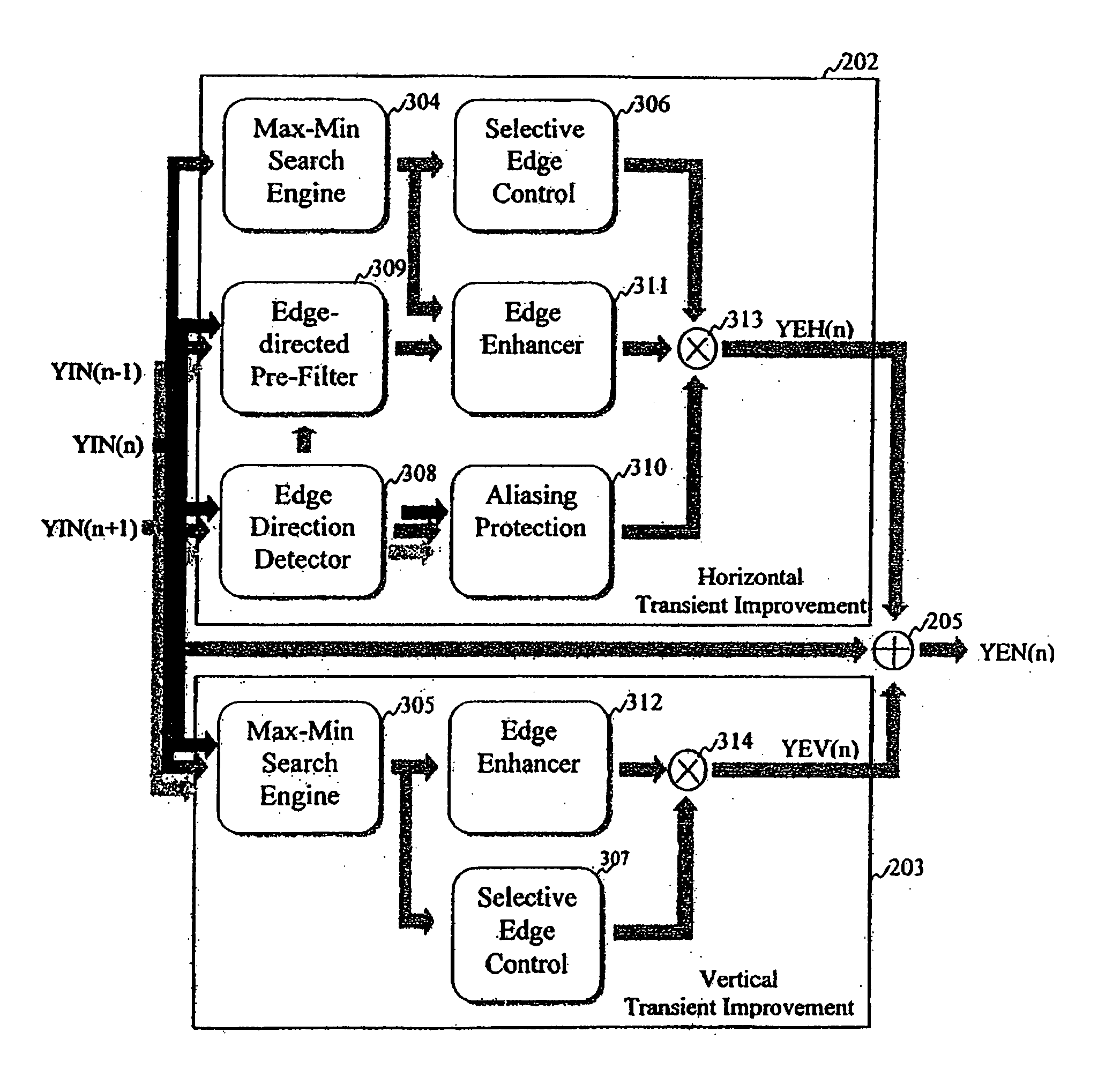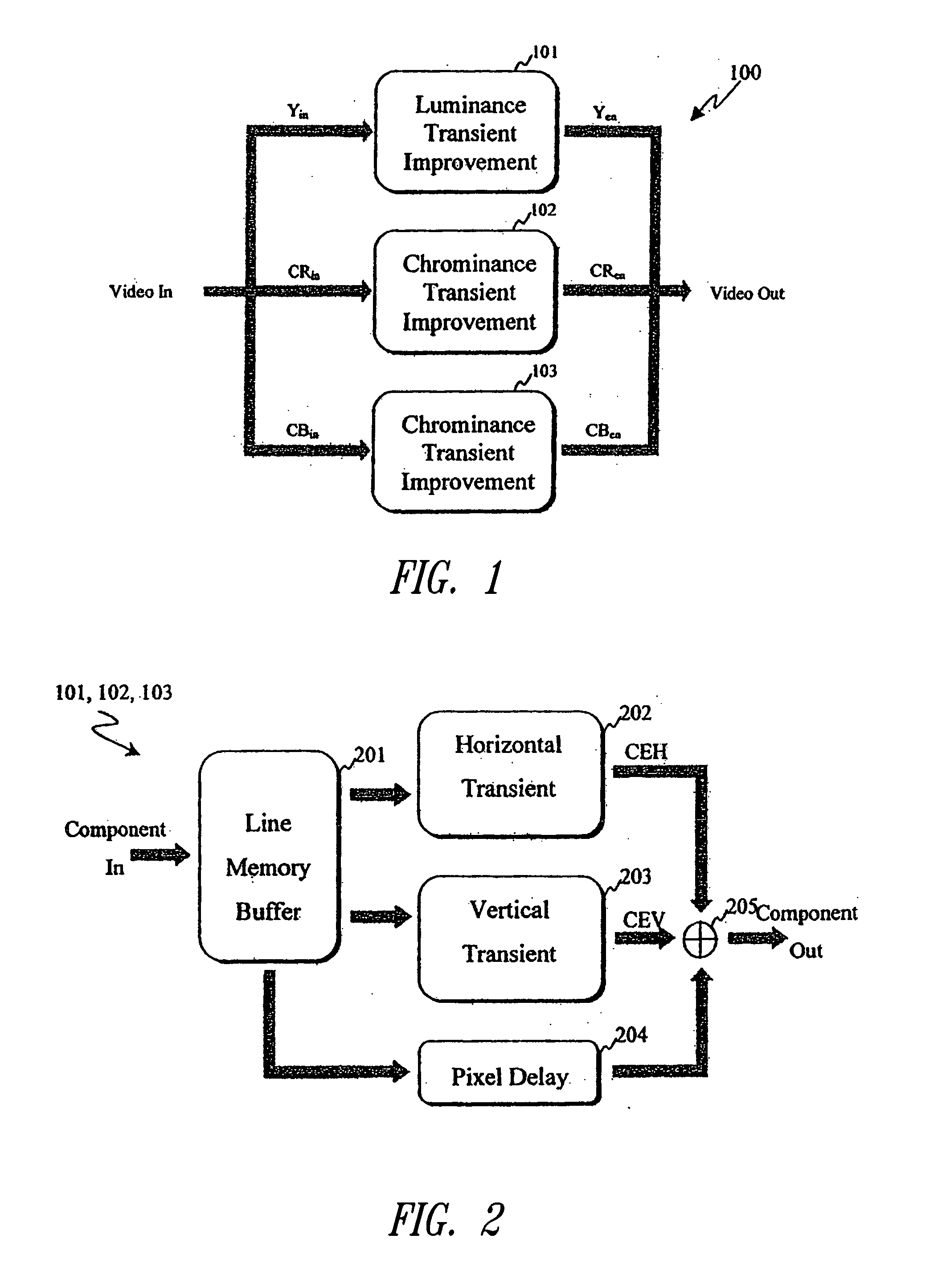Edge enhancement process and system
- Summary
- Abstract
- Description
- Claims
- Application Information
AI Technical Summary
Benefits of technology
Problems solved by technology
Method used
Image
Examples
Embodiment Construction
As shown in FIG. 1, an edge enhancement system 100 includes a luminance transient improvement circuit 101 and two chrominance transient improvement circuits 102, 103 for respective chrominance components. The edge enhancement system 100 executes an edge enhancement process to generate output image data with enhanced edge features from input image data. In the preferred embodiment, the edge enhancement process is implemented by hardware components of the edge enhancement system 100, including application-specific integrated circuits (ASICs). However, it will be apparent to those skilled in that art that at least parts of the edge enhancement process can alternatively be provided by one or more software modules executed by a digital signal processor (DSP) or other computing device, such as a standard computer system.
The edge enhancement system 100 can be used as a component in a variety of still and moving (i.e., video) image devices and systems. For example, the edge enhancement s...
PUM
 Login to View More
Login to View More Abstract
Description
Claims
Application Information
 Login to View More
Login to View More - R&D
- Intellectual Property
- Life Sciences
- Materials
- Tech Scout
- Unparalleled Data Quality
- Higher Quality Content
- 60% Fewer Hallucinations
Browse by: Latest US Patents, China's latest patents, Technical Efficacy Thesaurus, Application Domain, Technology Topic, Popular Technical Reports.
© 2025 PatSnap. All rights reserved.Legal|Privacy policy|Modern Slavery Act Transparency Statement|Sitemap|About US| Contact US: help@patsnap.com



